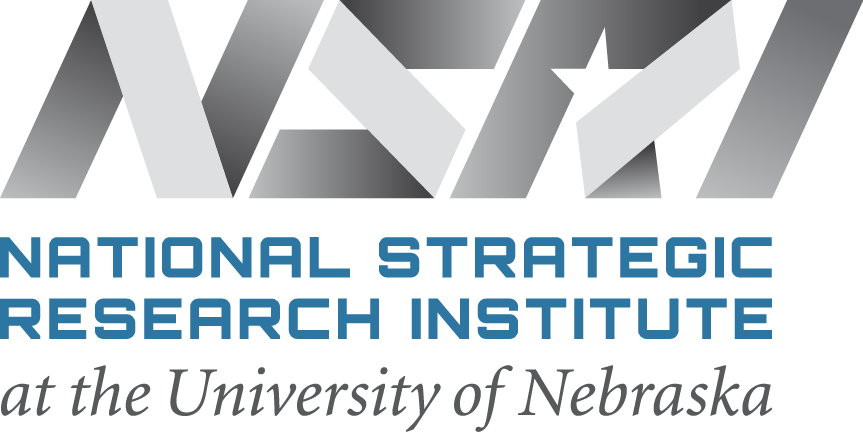
It seems as though Dr. Benjamin Riggan, assistant professor of electrical and computer engineering at the University of Nebraska–Lincoln, was destined to be an engineer.
As early as elementary school, he wanted to be a computer programmer—even if he didn't really understand the job. His natural curiosity made him want to create things, which often manifested as him tearing apart a fair share of computers, several of which would never reboot again.
"My parents would tell you they knew I was going to be an engineer because I was the kind of kid who would stick a knife in the socket and live to tell the tale," Dr. Riggan said. "I always gravitated toward problem-solving challenges. And it’s that curiosity that drives my research today."
As an undergraduate student studying computer engineering, Dr. Riggan had the opportunity to work on a project with a self-driving car. This was his first introduction to the field of computer vision, which attempts to use artificial intelligence (AI) to help computers identify visual data, such as input from a camera. The project spurred his career towards a fascinating direction.
From there, he went on to earn his master’s and doctoral degrees in electrical engineering, publishing articles such as, “Recognition of microcalcifications in mammograms: feature extraction,” at the Army Conference on Applied Statistics in 2012, and “A Human Factors Study of Graphical Passwords using Biometrics” at German Conference on Pattern Recognition in 2014. He continued to work with and apply AI in areas such as self-driving cars, detecting cancer in medical imagery, security and biometrics.
"I would largely describe my work as an intersection of computer vision, artificial intelligence, optical physics and image processing—it encompasses all of those things," he explained.
For example, Dr. Riggan has published more than 20 conference and journal papers relating to enhancing nighttime recognition using thermal or polarimetric thermal imaging and receiving three best paper awards. He has also contributed to advancing unsupervised learning, person re-identification, aerial autonomy and long-range recognition with another 10 papers.
All of these fields of study reward the kind of creative problem-solving Dr. Riggan has always been drawn to. There is a vast amount of information for AI to sort through, and, in the field, researchers do not have an unlimited amount of processing power to throw at a problem—they need to carefully consider which kinds of data are most important.
"AI models are getting larger and larger," Dr. Riggan explained, "but, at the end of the day, I tend to err toward the holistic philosophy that simple is better. The more efficient the model, the less power and computation it requires."
That kind of efficiency is an added challenge of working on equipment designed for real-world use rather than underlying theory, but Dr. Riggan wouldn’t have it any other way. In addition to his love for solving complex problems, he also likes knowing his work can and is making a difference in the real world.
"I don’t do research just for the sake of research," he said. "Don’t get me wrong—in another lifetime, I could have been happy as an applied mathematician. But math, for math’s sake, isn’t what I’m after right now. I want my work to be grounded in relevant applications for real people."
The work Dr. Riggan does in the area of defense fits that criteria for him.
"I collaborate on projects in a lot of different areas, but I have a long background of working with the DOD and law enforcement," he said. "Those are the kinds of real problems that can save people’s lives."
In 2024, Dr. Riggan helped deliver a project to U.S. Army Combat Capabilities Development Command (DEVCOM) Army Research Laboratory. The effort leveraged the indefinite-delivery, indefinite-quantity (IDIQ) contract vehicle administered by the National Strategic Research Institute (NSRI) at the University of Nebraska, which serves as a DOD-designated University Affiliated Research Center.
Collaborating with researchers from the UNL Nebraska Intelligent MoBile Unmanned Systems (NIMBUS) Lab, Dr. Riggan helped develop a coordinated multi-agent autonomous swarm deployment. The aim was for the NIMBUS mothership to drop several "baby" drones in flight while several other drones take off from the ground. The mothership, with an onboard camera system, identified and tracked the swarming drones. Ground- and air-based radars were used to attempt to identify and track the swarm as part of a counter-UAS effort.
Dr. Riggan’s role was to create the perception element of the mothership drone and detect the drones using a camera onboard the mothership to observe the environment.
"We learned a lot about the differences in the optics—how much different a thermal image is from a visible image," he said. "And we figured out how to bridge that gap for very tiny objects, which gives us the potential to accomplish a lot of these challenging situations that could be relevant to DOD applications—being able to expand that border of safety for force protection."
Dr. Shuvra S. Bhattacharyya, professor of electrical and computer engineering at the University of Maryland, is a frequent collaborator with Dr. Riggan through ArtIAMAS, a cooperative agreement between the Army Research Laboratory and the University of Maryland.
"Dr. Riggan has a unique blend of experience working in government and academic research environments, which gives him a deep understanding of how to lead research that has the potential for impact in areas of strategic importance, especially in defense- and security-oriented contexts," Dr. Bhattacharyya said.
"He also has an interdisciplinary mindset, which allows him to contribute to diverse teams that tackle problems across traditional disciplinary boundaries."
Working on complex problems that require transdisciplinary solutions is one of most interesting parts of the job. Sometimes, that means reaching out to professionals in other areas, and NSRI has been a great resource to make that happen, Dr. Riggan said.

"NSRI has been extremely beneficial in introducing me to new collaborators, even within the University of Nebraska System," he said. "It gives me the opportunity to learn what other talented faculty are working on. Often, there’s great synergy between seemingly very different areas, and we can come together to find solutions to difficult problems."
And there are certainly difficult problems to be solved and also to be found with AI. One of the biggest issues Dr. Riggan sees is finding the right balance between automation and human decision making.
"One problem we’re working on is the adaptability and dynamic manipulation of AI systems in some kind of measurable way to adjust it to a given situation," he said. "We don’t want AI making decisions 100 percent on its own when there’s accountability needed, which it definitely is in the national security landscape. We can’t remove a human from the decision-making process. We want these tools to make operators’ jobs easier and safer, but not at the expense of eliminating accountability.
"Some of the solutions will probably come from policy, but I don’t think extremely strict policy that restricts research is the solution, either. We have to find a balance."
AI and other forms of automation are sweeping the world and changing the face of almost every industry, including defense. It’s hard to say exactly what the future will hold for these technologies, but hard-working, talented researchers like Dr. Riggan are on the forefront to make sure the U.S. stays on the cutting edge.

